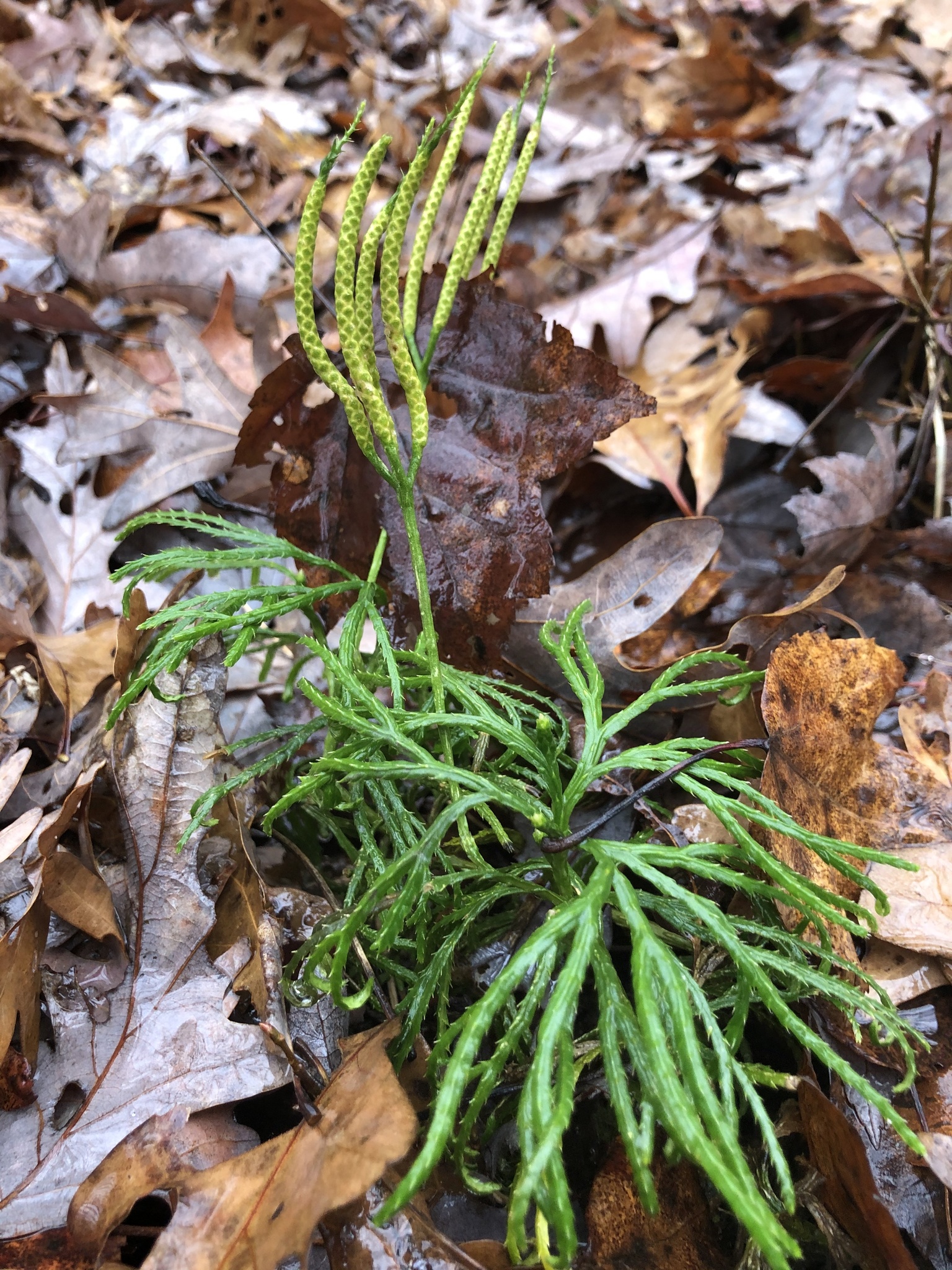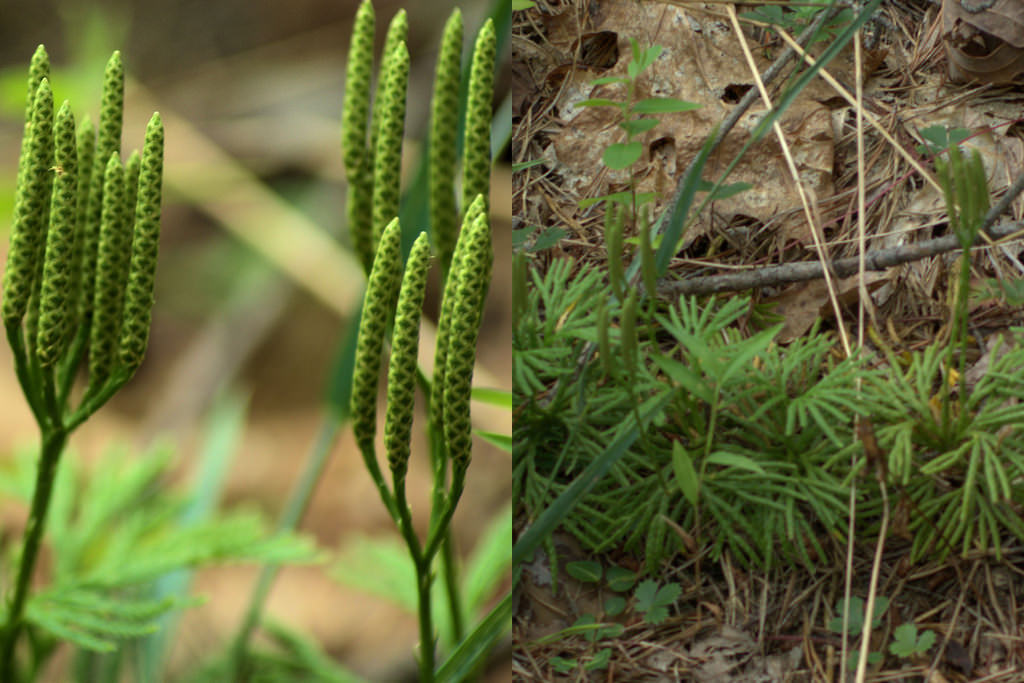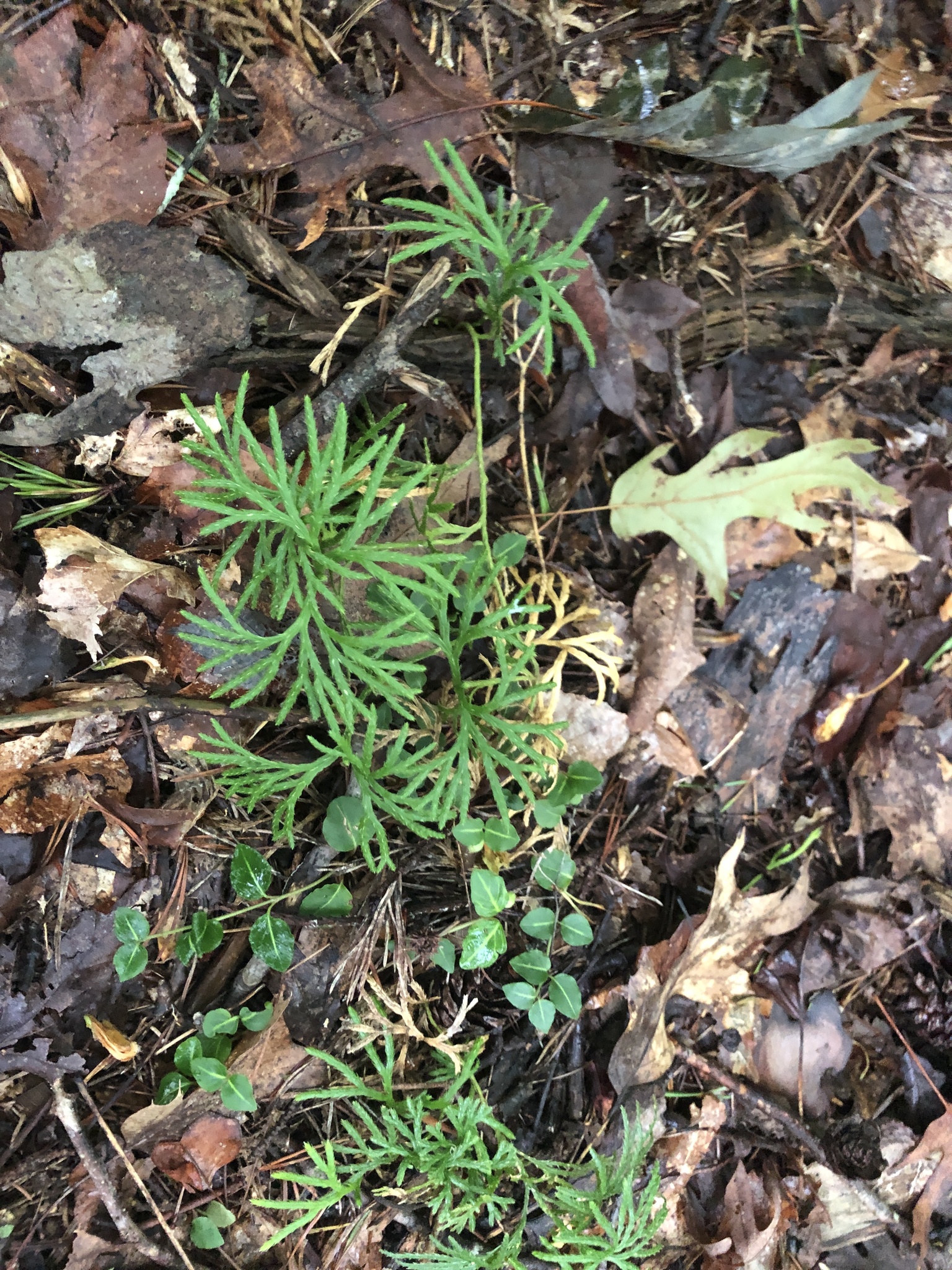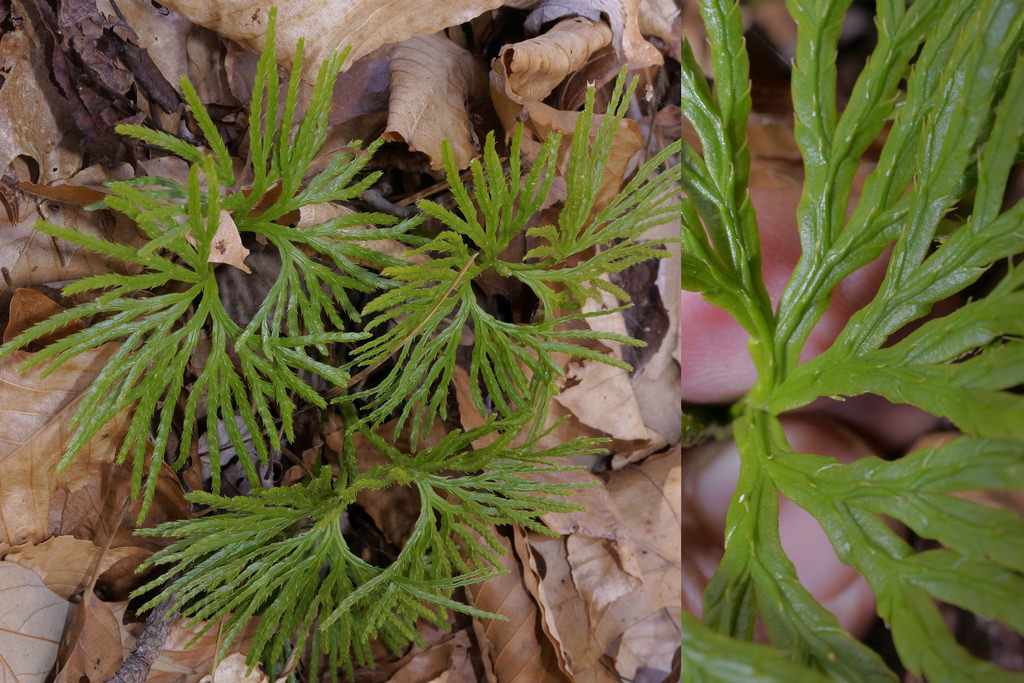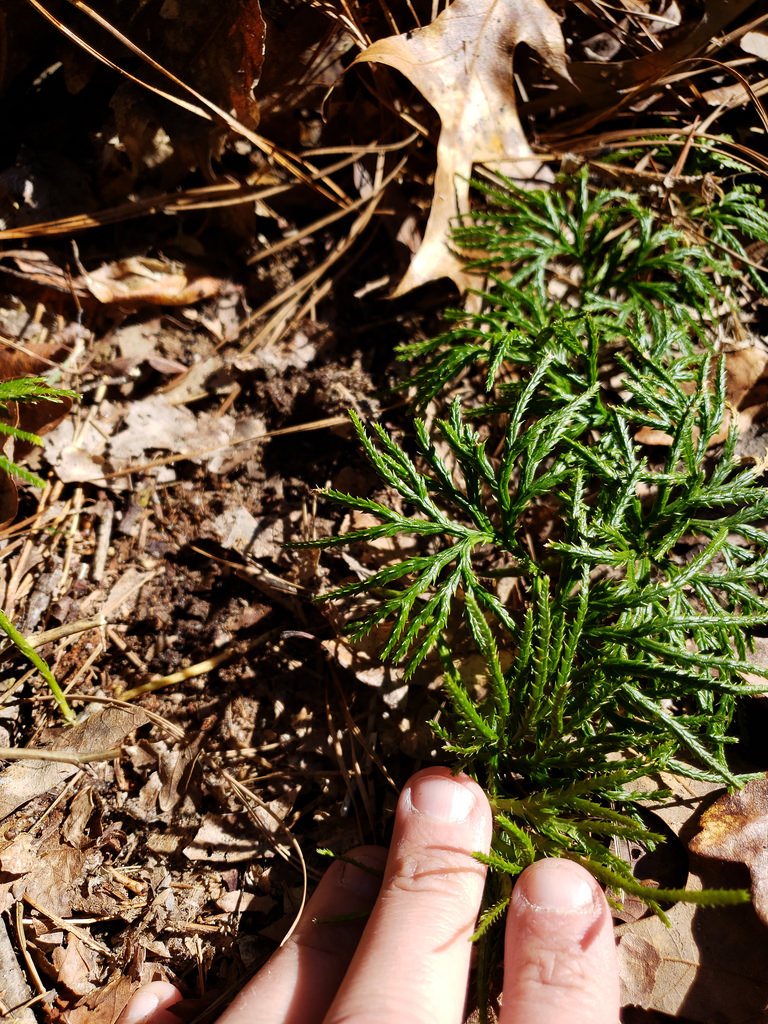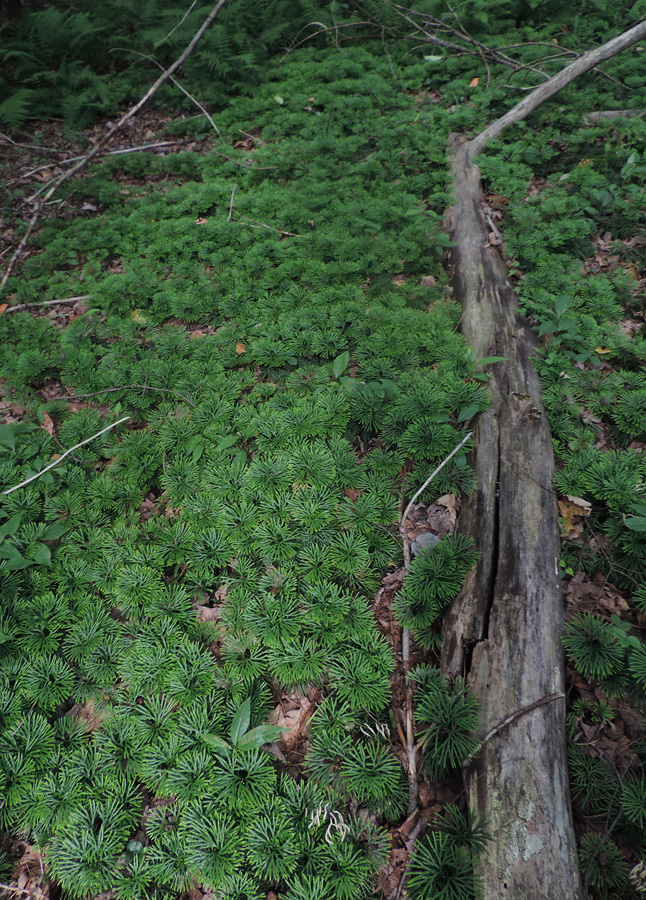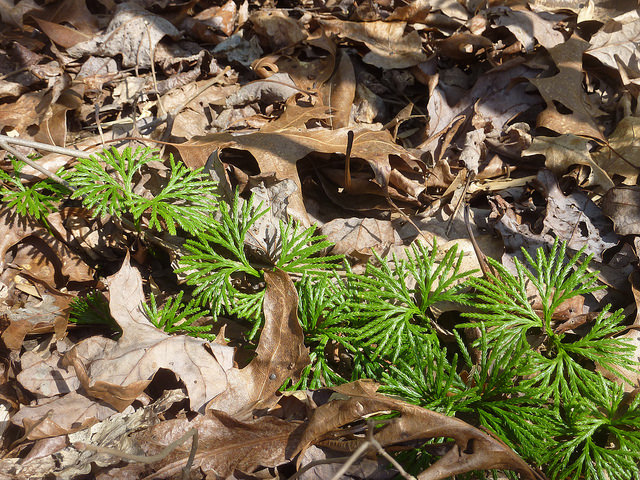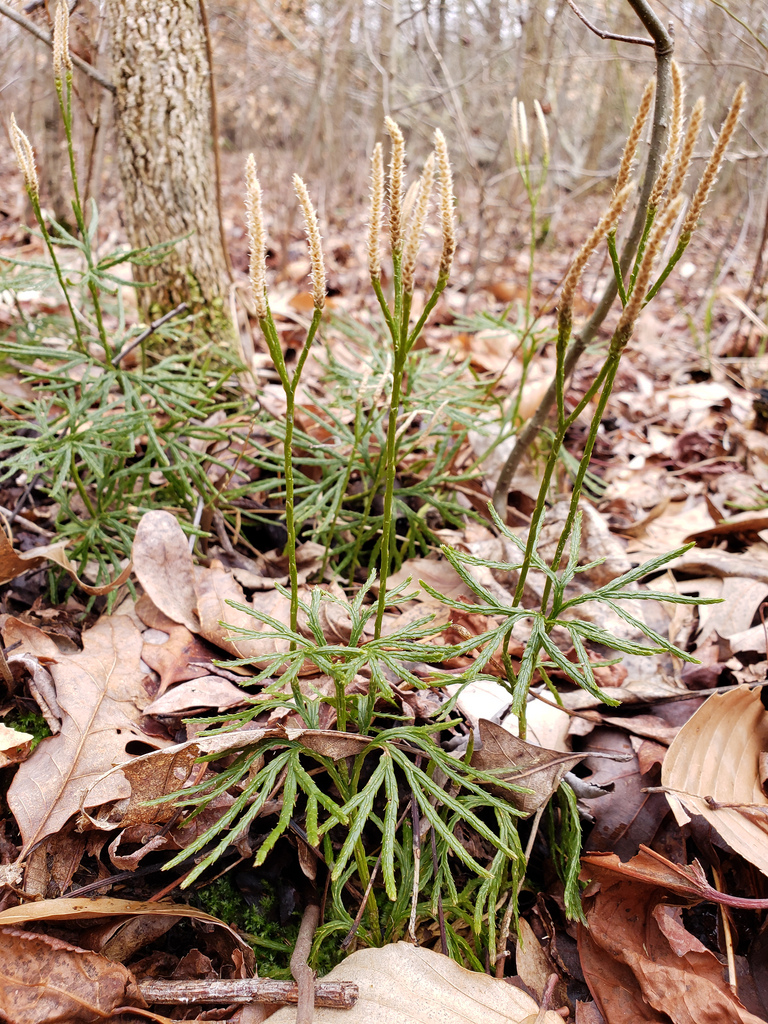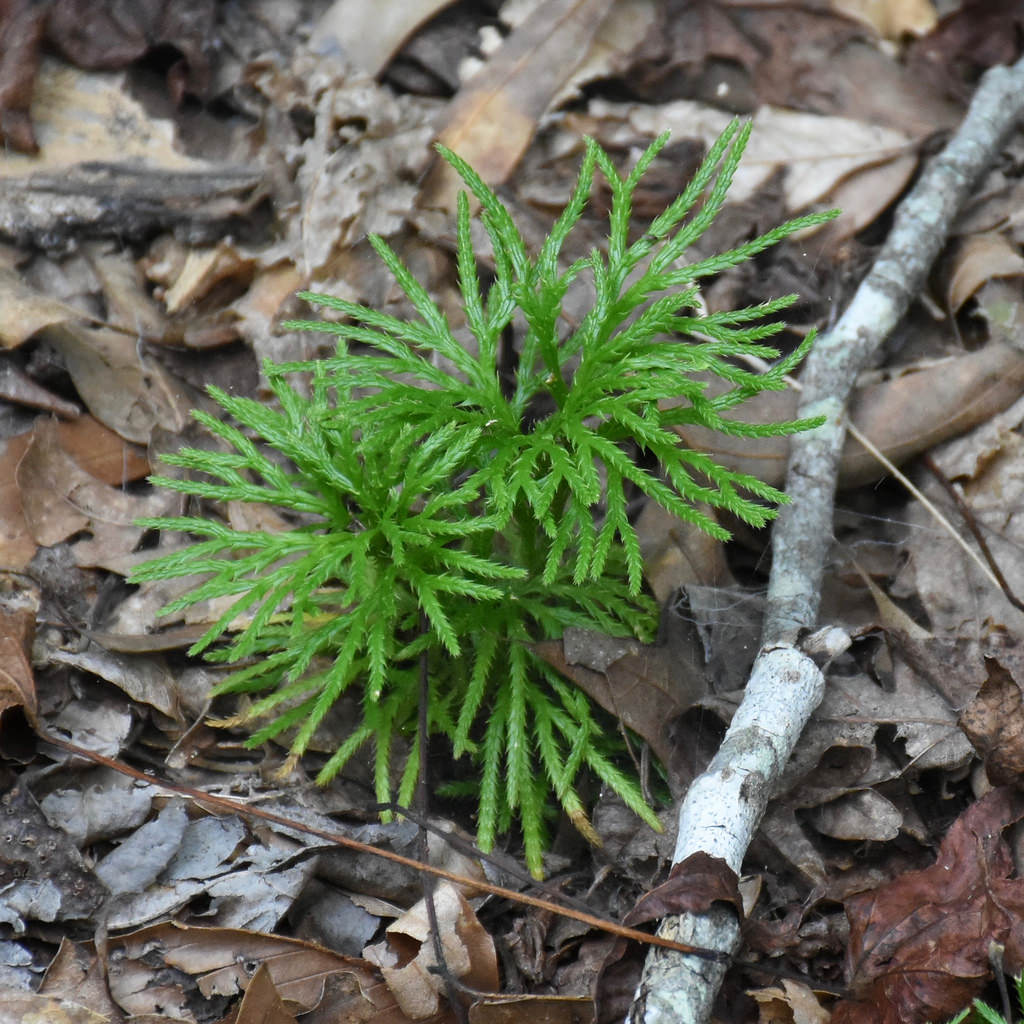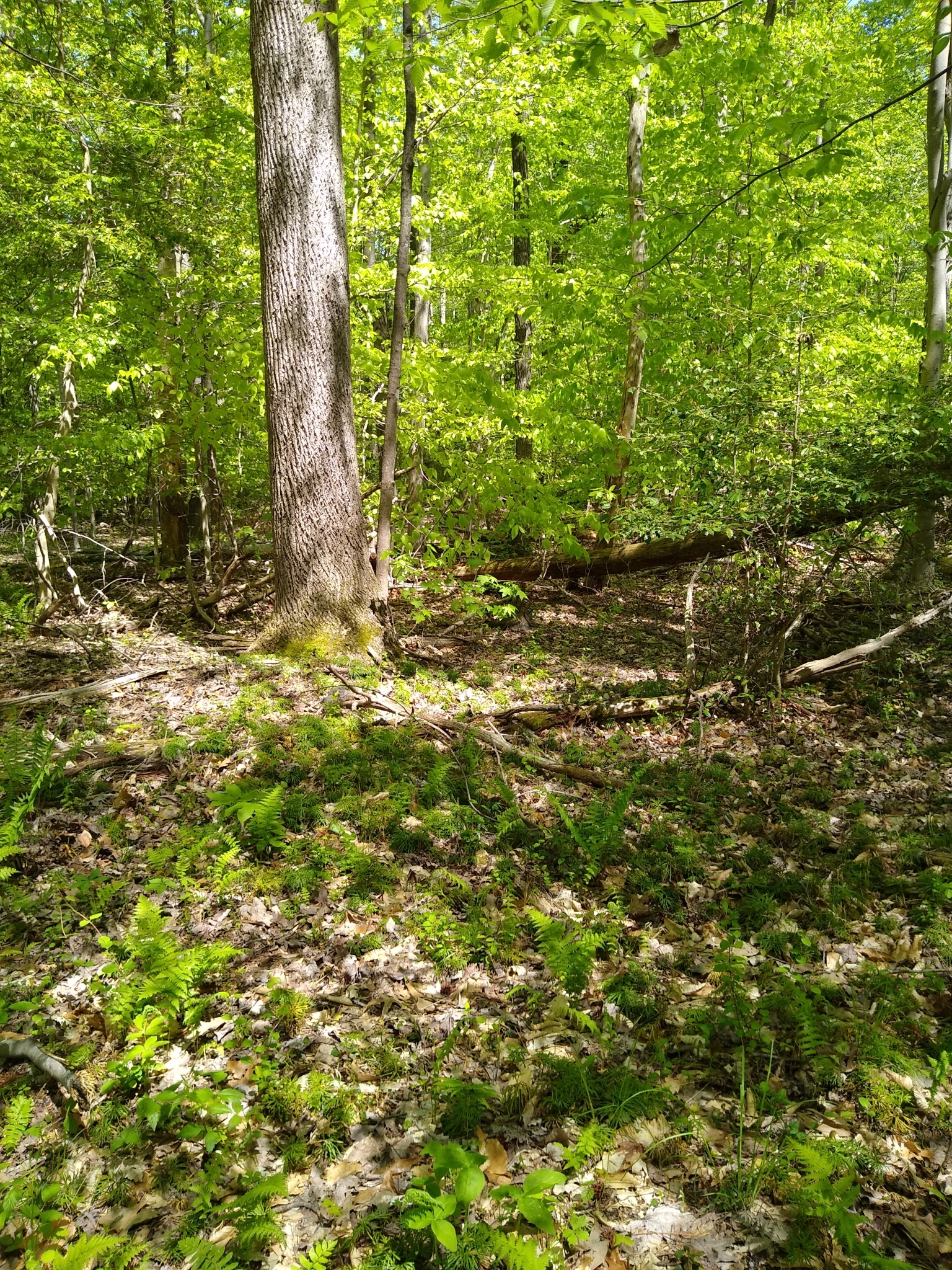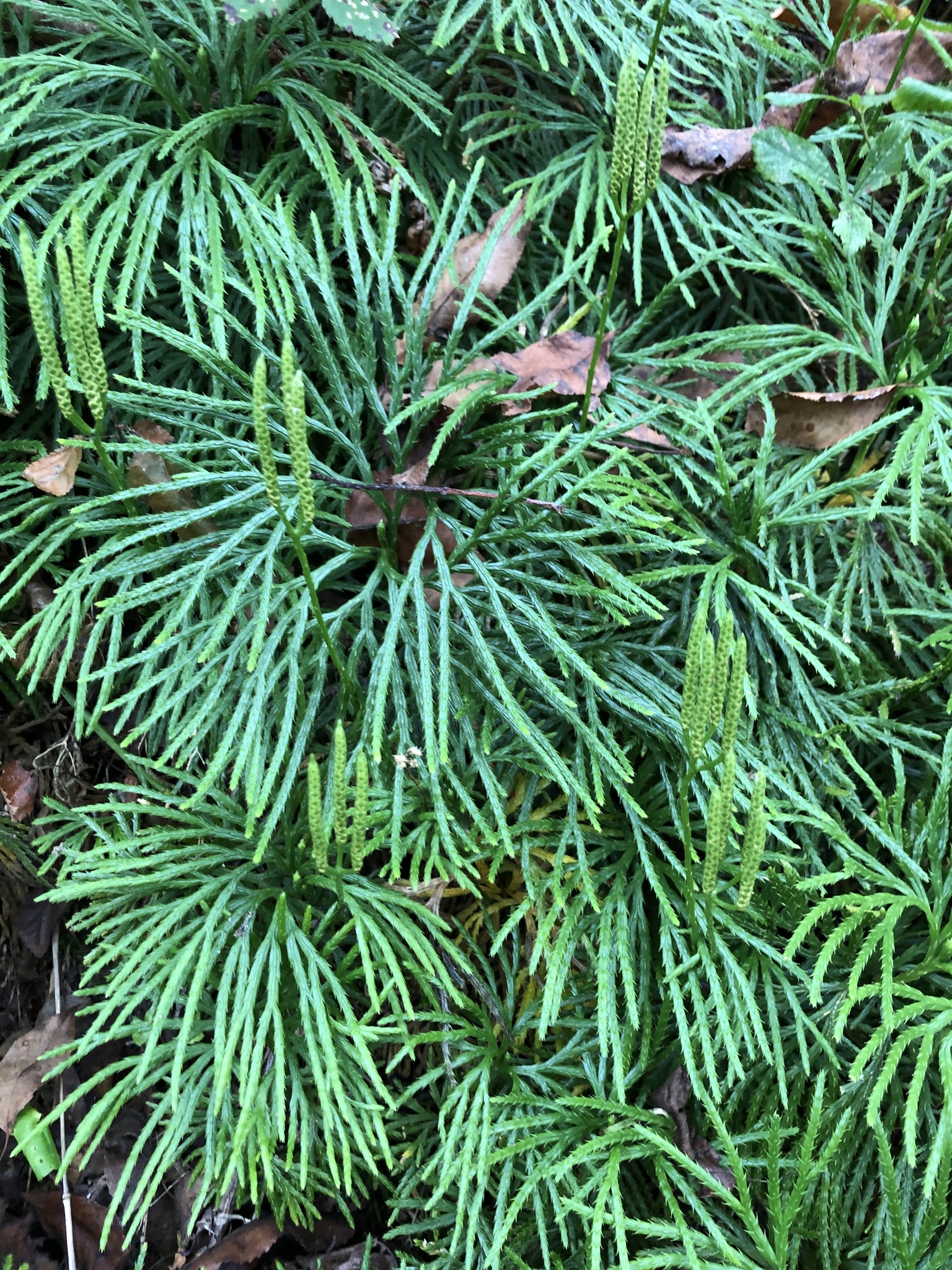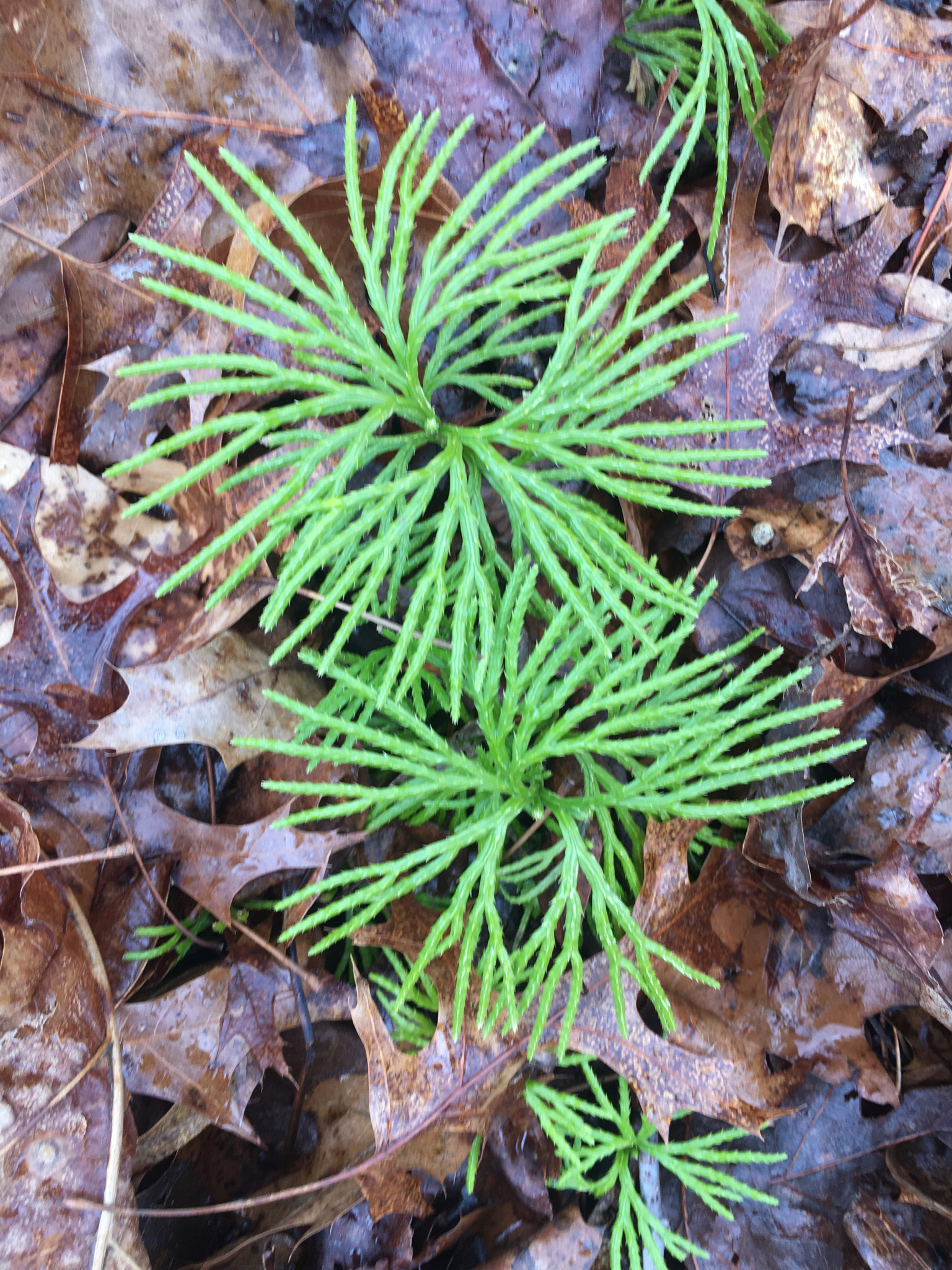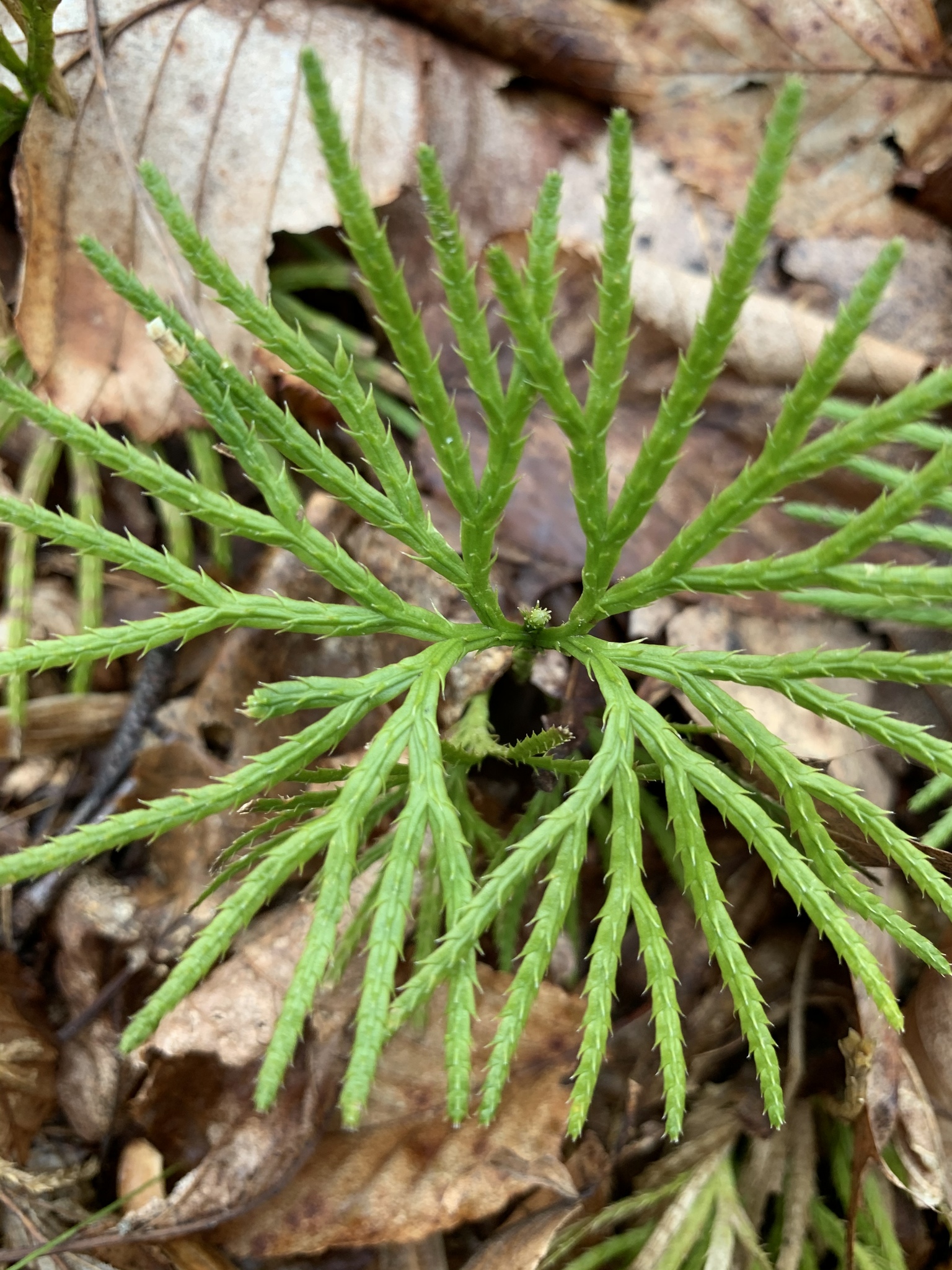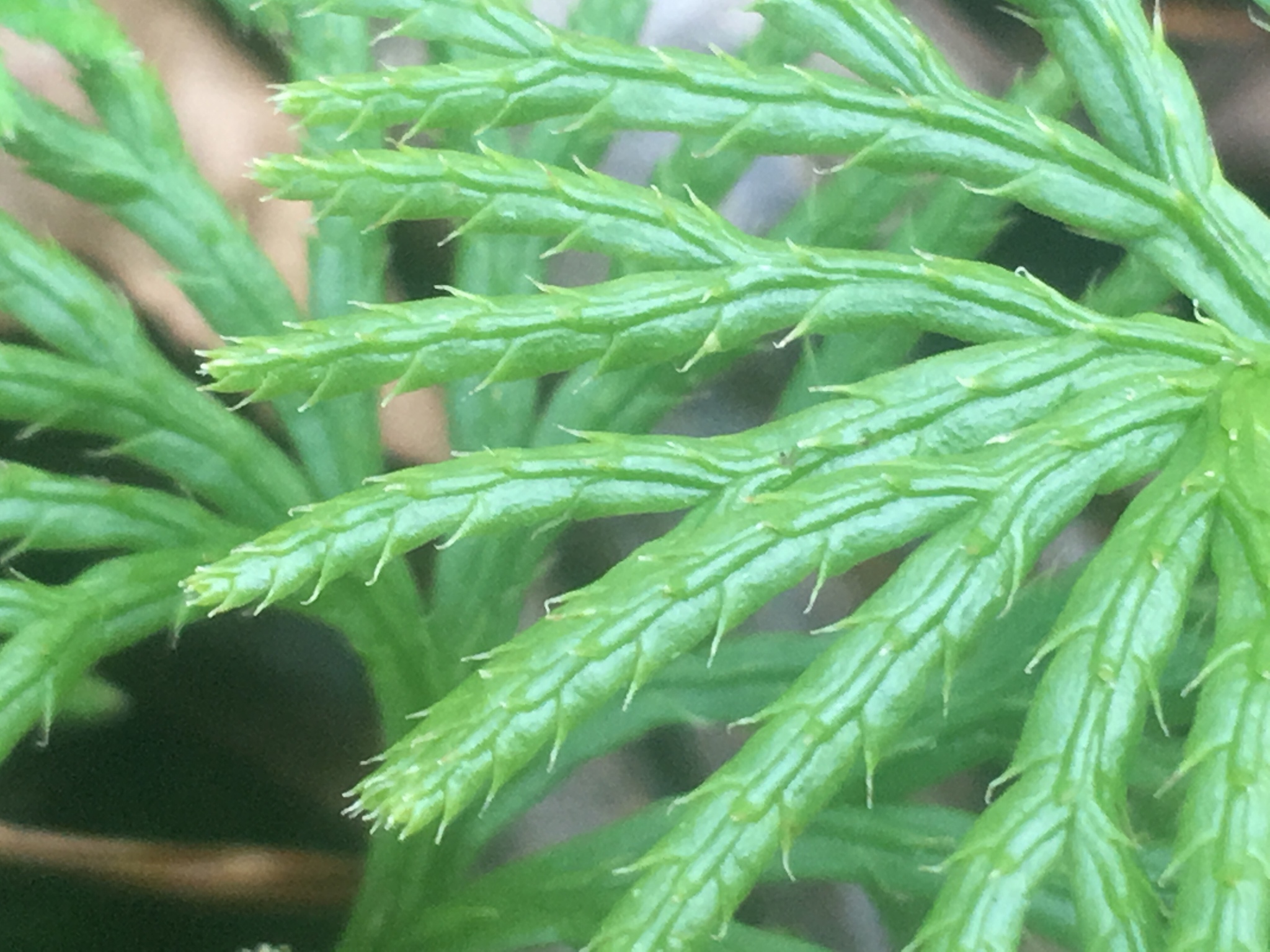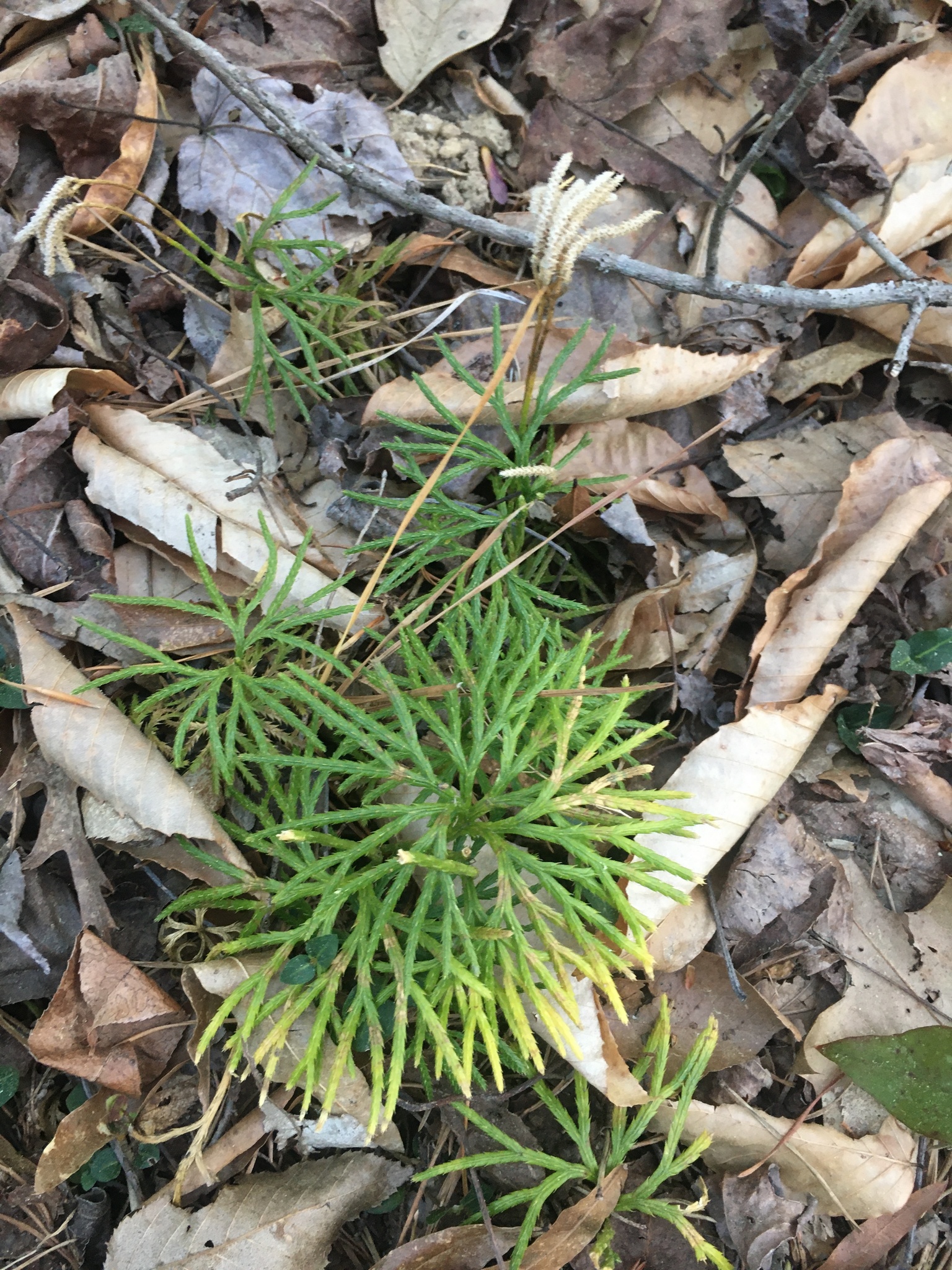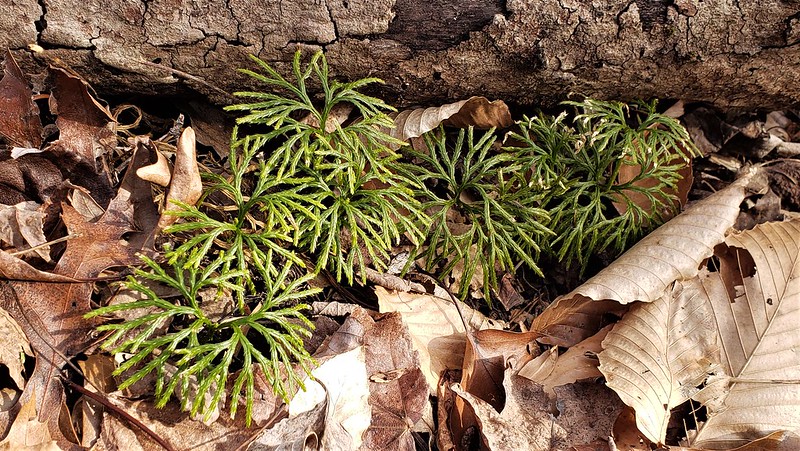

 Synonyms: Common Running-Cedar, Fan Clubmoss, Groundcedar, Lycopodium complanatum var. flabelliforme, Lycopodium digitatum, Lycopodium flabelliforme, Running Cedar.
Synonyms: Common Running-Cedar, Fan Clubmoss, Groundcedar, Lycopodium complanatum var. flabelliforme, Lycopodium digitatum, Lycopodium flabelliforme, Running Cedar.
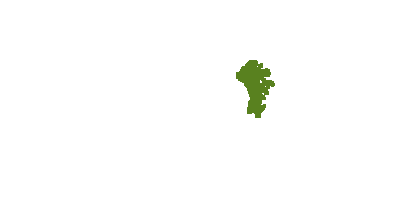





















Southern Ground Cedar is a clubmoss, a kind of vascular plant that lacks flowers and reproduces through spores. Southern Ground Cedar occurs across eastern North America, including throughout Maryland. Spreading by rhizomes, or horizontal stems, that are at or near the soil surface, Southern Ground Cedar can form large clonal colonies that carpet mesic forest floors. Clubmosses are very slow-growing and form critical ground cover. They have been harvested for Christmas decorations and other purposes for centuries, leading to depletion in some forests. Clubmosses should not be harvested, and transplants seldom survive.
This species spreads to new habitats by releasing spores from clusters of yellowish strobili (cone-like structures) at the tips of the plant, typically during late summer or autumn.
Southern Ground Cedar can be confused with the uncommon Blue Ground Cedar (Diphasiastrum tristachyum). To differentiate the two species you need to look at a variety of features. First check out the horizontal stems. Southern Ground Cedar has horizontal stems that are right on the surface of the ground or just under the surface. Blue Ground Cedar has horizontal stems that can be found up to 12cm under the ground. Next look at the coloration of the vertical parts of the plant. Southern Ground Cedar is typically dark green and not glaucous while Blue Ground Cedar, like its name, is blue-green and glaucous. Next check out the branchlets. Southern Ground Cedar lacks annual constrictions on the branchlets while Blue Ground Cedar typically has obvious annual constrictions on the branchlets.
Southern Ground Cedar occurs in mesic to dry acidic forests, old fields, and clearings. It is especially common in successional pine and Tulip-tree forests (Weakley, et al., 2012), and thus is a good indicator of past disturbance of a site (R. Simmons, pers. comm.).
Because clubmoss species are evergreen, winter is the best time to findthem; they are often the only green plants growing on the forest floor.
The foliage of clubmosses contains toxic alkaloids, so is usually avoided by mammalian herbivores (Illinois Wildflowers website). Clubmosses are one of the forest-floor plants that provide protective cover for the ground-nesting Nashville Warbler (Harrison, 1975).
There are 630 records in the project database.
| GA | AL | WA | FR | CL | MO | HO | BA | BC | HA | CE | PG | AA | CV | CH | SM | KE | QA | CN | TA | DO | WI | SO | WO |
